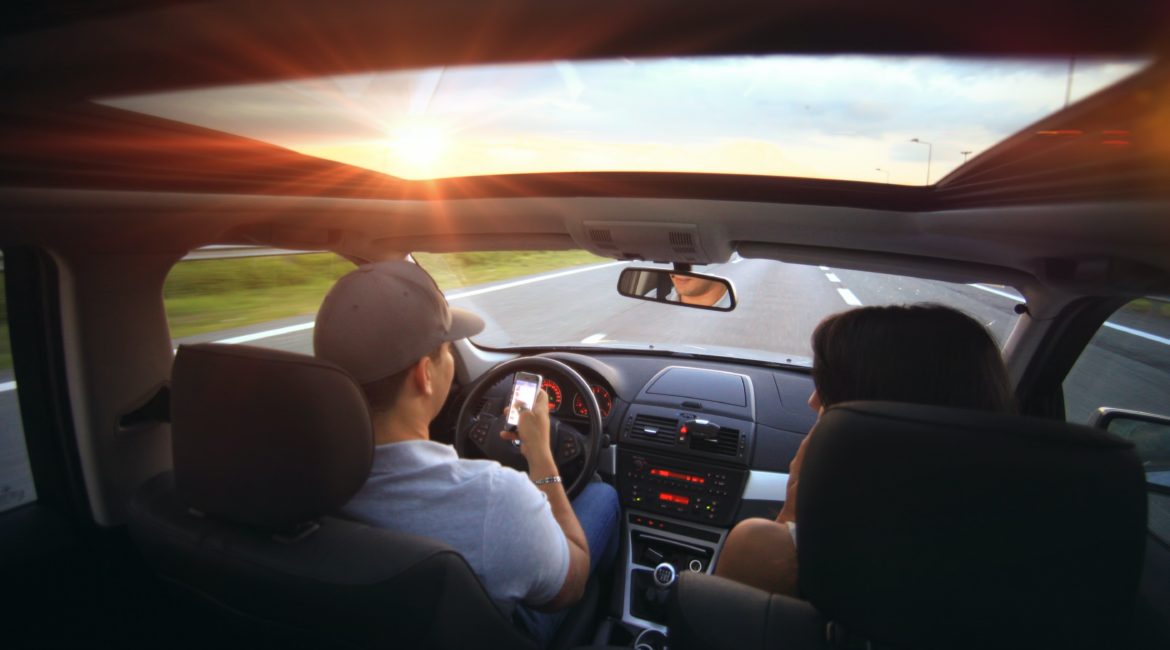Distracted drivers are everywhere. At some time or another, we have all done it: your cell phone chirps at you with your latest text message or it rings with a call from your spouse. You know you shouldn’t pick it up. You know you should keep your eyes on the road, but eventually you pick up the phone and remove your attention from driving and instead put it on your phone.
In the United States in 2019, 36,096 fatalities resulted from distracted driving in some form or another. While there are many different types of distracted driving (eating, friends, children, loud music, etc.), the biggest distraction most of us drive with is our phone.
The Perils of Distracted Drivers
In 2019, approximately 7% of fatal crashes involved distracted drivers that were distracted and not giving their full attention to the road ahead.
I feel as though when I am in traffic everyday I see other drivers texting while driving, talking on their cell phone, browsing their social media pages, taking photographs of themselves, or picking out the next song or podcast on Spotify.
But the problem with distracted drivers isn’t only potential death (though that is clearly a serious danger). Fifteen percent of all crashes which resulted in an injury in 2019 were the result of distracted drivers. Distraction-related motor vehicle crashes injured over 400,000 people.

Solutions for Distracted Drivers
Luckily, this appears to be a problem that we as a society are taking seriously. The Florida Legislature has passed the Wireless Communications While Driving Law and pushed the “Put it Down: Focus on Driving” campaign in order to help promote traffic safety and (hopefully) save lives.
In Florida, drivers that are seen on their cell phones while driving can be pulled over, ticketed, and fined $30 for a first offense and $60 and a 3 point assessment on the offender’s license for a second offense (not including other court costs and fees).
Cell phones are becoming more and more ingrained in our lives on a daily basis. This type of campaign’s success might not be measured in how much it decreases distracted driving, but in how much it slows the yearly increase in distracted driving we experience on our roadways.
Tech Companies Doing Their Part
While one might argue that by virtue of making our cell phones and psychologically engineering them to be addictive, companies like Apple and Google (not to mention Facebook, Instagram, Tik Tok, and other social media apps) are the cause of many of the motor vehicle crashes that occur as a result of distracted driving. However, some of these companies are also trying to solve the problem.
Nearly every cell phone comes with some sort of hands free mode. These modes even include texting capabilities done via voice command. The obvious goal being to help promote safe driving.
Android phones can tell when a user enters their vehicle and prompts them with Google’s driving mode. Google Maps uses Google Assistant to allow users to drive while operating their phone hands free.
Amazon’s media apps force their users to opt out of it’s driving mode. A prompt comes from the app each time you are moving at more than a predetermined speed. Some of these programs even allow you to use your phone to adjust the radio station you are listening to.
The bottom line is that though the problem is growing, Big Tech, for all of it’s faults, is at least trying to do something about the problem. While they might simply be bailing water out of the Titanic at this point, it is better than them failing to try anything to improve the issue.
Hire an Experienced Florida Personal Injury Attorney
I hear the distracted driving story all too often. While waiting at a red light, someone will be waiting for their turn to proceed when they are crashed into from behind. The driver of the other vehicle will apologize profusely. Their phone distracted them. It is an all-too-common scenario on Florida roadways.
Knapp Accident & Injury Law has experience protecting the rights of victims of distracted driving. Call us at (813) 568-3724 if you have been injured due to the negligence of a distracted driver. Just don’t do it while you are the one behind the wheel!





